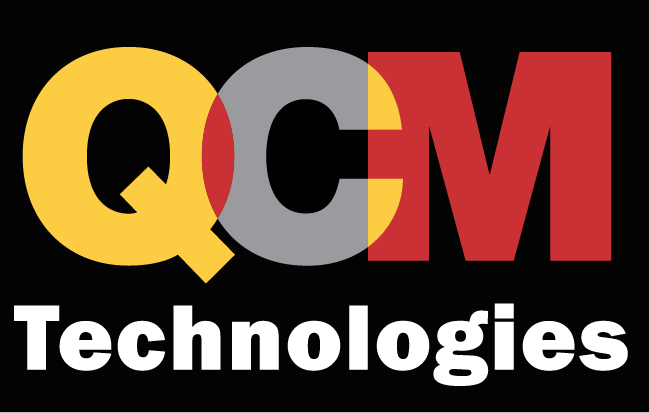7 Secrets for Getting Digital Transformation Right
A technology-first approach to digital transformation is a recipe for disaster. Start instead by overhauling your organization with a customer-centric end goal in mind.
Let's talk about 7 Secrets for Getting Digital Transformation Right. One of the habits from Stephen Covey’s bestselling book The 7 Habits of Highly Effective People is to begin with the end in mind. Putting that in today’s business context, organizations need to figure out what digital transformation means for their business and what their goals are before they go throwing a bunch of new technologies at an ill-defined problem. By focusing too closely on being competitive and innovative and putting the bulk of their efforts into technology, they might be missing the boat.
Technology, of course, is a key driver. IDC estimates $1.2 trillion will be spent on digital transformation technologies in 2017, an increase of 17.8 percent over 2016.
Yet, a significant number of organizations are not getting transformation right because of a fundamental quandary over what digital transformation really is, says Brian Solis, principal analyst and futurist at Altimeter, a Prophet company.
Altimeter’s 2017 State of Digital Transformation report finds that while organizations are investing in innovative technologies, most are lagging or failing to respond to consumers’ new expectations due to “meager digital literacy.” The report also finds many companies have cultures and that “politics, ego and fear are the main obstacles to achieving the collaboration and solidarity needed within companies to make the changes digital consumers want.”
When companies start with a tech-first approach they miss the purpose of what digital transformation is all about, maintains Solis. “I think a lot of times, companies and CIOs in particular, fall into what I call ‘the technology trap.’” Quite simply, he says, it means they are building upon a legacy foundation with new stuff.
“There’s this idea if we use the technology that our customers use or the latest apps and mobile sites or chatbots, we’re keeping up with disruption,” Solis says, “and I think none of this is bad, but it’s a common trap for the evolution of digital transformation.”
To see how it’s being done right, here are seven secrets of successful digital transformations.
1) Digital transformation is really about human transformation
“Having a stellar team who is always willing to embrace technologies helps … as often, the pace of technological change exceeds the ability of formal education to keep up,’’ he says. “I believe having people who are passionate, curious and motivated by the mission is the key to success in achieving a true digital transformation.”
2) Take a customer-centric approach
“The few that are getting it right start with an outside-in approach,’’ says Solis. “They’re looking at something that is either broken or missing to solve a need,” and then tie in ROI and key performance indicators (KPIs) “to demonstrate progress and success.”
They are also focusing on the customer experience first and foremost, he adds. “They look at the customer journey or parts of the customer journey; they look at the mobile journey in particular, and they look at fixing something that could create greater opportunity so they can tie immediate opportunity to it.”
3) Create new teams
CarMax knew consumers wanted a better experience with the ability to buy a car from its website. To do that, officials organized employees into product teams that all have “three critical, non-negotiable roles”: a product manager, a lead developer/engineer and a user experience person. They are supplemented by other development, quality assurance, finance and operations members for anywhere from seven to nine people.
One idea officials wanted to try out was delivering a car to someone’s home. One of the product teams built a mobile app and embedded capabilities so a customer can order a car from a mobile device and have it delivered to their driveway within a couple of weeks. The team “didn’t go for a perfect solution on day one; they got the capability in the hands of a customer quickly and then worked on making it better,’’ Mohammad adds.
4) Fostering collaboration as technology is deployed
As Pitney Bowes was designing curricula around targeted technology areas, officials also formed a tech strategy team and global innovation roundtables to foster greater collaboration. “All teams were sharing practices to test continuous integration and continuous delivery so all apps moving to the cloud were benefiting,’’ says Fairweather.
With help from “trailblazing teams” the company developed a standard tool chain and a standard set of practices that were then shared by building a community around devops, he says.
5) Be unapologetic about change
With a salesforce of 25,000 people, there was bound to be resistance when industrial giant GE began implementing digital technologies into its global sales operation. And there was. Most hadn’t changed the way they sell in over 20 years.
“We did have naysayers [but] if you’re trying to drive any change, don’t worry about them,” says Cate Gutowski, vice president of GE Commercial and digitalTHREAD, the connected digital ecosystem.
6) Adopt a startup mentality
In 2014, AT&T’s prepaid carrier was merged with the newly acquired Cricket Wireless. The two competing prepaid companies needed to transition into one large national player.
Like John Deere and CarMax, Cricket Wireless has adopted a more agile development model, says Darin Morrow, vice president and CIO. That has meant a focus on “operating nimbly and with integrity, making sure that things happen in the right way.”
7) Drive management buy-in
The Altimeter survey indicates that only 40 percent of respondent companies operate with an executive-mandated steering committee responsible for organizational transformation.
Although the C-suite typically decides what the business strategy will be and informs the rest of the organization, Jayaram of John Deere decided to turn that around. “I chose to flip the traditional top-down approach” and instead brought together 40 people “from different levels of hierarchy within IT” to create a new IT strategy for transforming the company to a digital enterprise.
“We went through a whole co-creation process before we took it to the C-suite,’’ he says. Some who gave input are new to the company but are subject matter experts in user experience or agile development.
“As we went through the rollout of the strategy, we polled about 170 of our fellow colleagues across IT to find out if it makes sense and resonates as directionally correct,’’ Jayaram says. The results were a 4.5 out of 5.
Then Jayaram went to the C-suite and presented the smart connected plan with lean agile methodologies.
“We know people believe this is a life strategy and will transform the company,’’ he says, and leadership is committed, and they can personally see how we can make a big difference.”
Need help with your Digital Transformation?
Ways to Reach Us
CALL US
Tim Kinnerup, Vice President**
(480) 483-4371 Office Direct
** If your situation is urgent, please reach out to Tim Kinnerup for assistance
EMAIL US info@box2449.temp.domains
USE OUR >> QUICK CONTACT FORM
QCM Technologies, Inc.
www.qcmtech.com
Scottsdale, Arizona • Est. 2001
Serving the Southwest for over 20 Years
SOURCE: CIO






